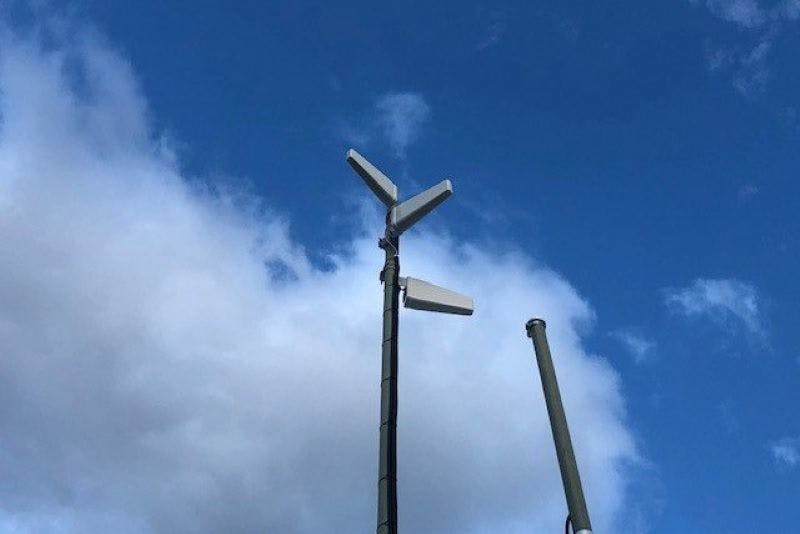Home


Resource Center
Sometimems a single cell tower connection isn’t enough, so a multi-tower targeting can provide the comprehensive coverage your building needs. This advanced technique allows your signal booster to work with multiple towers simultaneously, ensuring optimal performance even in challenging environments. We break down how it works and when to use it.
Multi-Tower Targeting
With Multi-Tower Targeting Technology integrators no longer have to choose just one cell tower to point to.
Multi-Tower Targeting uses a three outdoor-antenna-port configuration to receive cellular signal from multiple cell towers at the same time, allowing integrators to optimize for specific carriers that may be in different directions. This technology will support three directional antennas, where each antenna can optimize for one carrier on the following bands: 700 MHz, 1700-2200 MHz, 800 MHz.
The Enterprise 1300/1300R and Enterprise 4300/4300R have this built-in technology, which allows a single repeater to provide the best possible indoor cell coverage in a multi-tower situation.
In situations where only one outdoor antenna is desired the Enterprise repeaters can be switched to “common mode” to utilize a single outdoor antenna. However, in all cases,using Multi-Tower Targeting will significantly enhance signal quality indoors.

Multi-Tower Targeting FAQ
How do you know where to point antennas when using Multi-Tower Targeting?
WilsonPro recommends that integrators connect a directional antenna to a signal meter to orient the new antennas so that the priority carriers, as defined by the end user, are all covered.
This signal meter allows you to test signal strength on each carrier and provides carrier information, frequency, and signal quality. This signal meter connects to your phone through an app, which shows a map of where the cell towers are located.
Why not use “common mode” and an Omni Antenna instead of Multi-Tower Targeting?
First, “common mode” allows the repeater to operate with a single donor antenna. The Enterprise 1300/4300 will default to “common mode”.
Using an Omni Antenna provides little or no antenna gain, resulting in less indoor coverage. Additionally, “common mode” operation results in more system noise (lower data rates) for each band. Degraded “common mode” performance is characteristic of all cellular repeaters in which multiple bands are on a single outdoor port.
How will Multi-Tower Targeting help maximize performance for multiple carriers?
Carriers use multiple bands in most markets. Multi-Tower Targeting allows integrators to maximize a band for each desired carrier.
What if the cell towers are all in the same direction? Will Multi-Tower Targeting help?
Multi-Tower Targeting won’t help with signal strength in this situation, but it will improve signal quality, even if towers are all in the same direction. For more on Wilson’s innovative technology, listen to this webinar that dives into Multi-Tower Targeting.
Or call our expert team at 800-871-1612 to learn more.Tagged:Integrators

